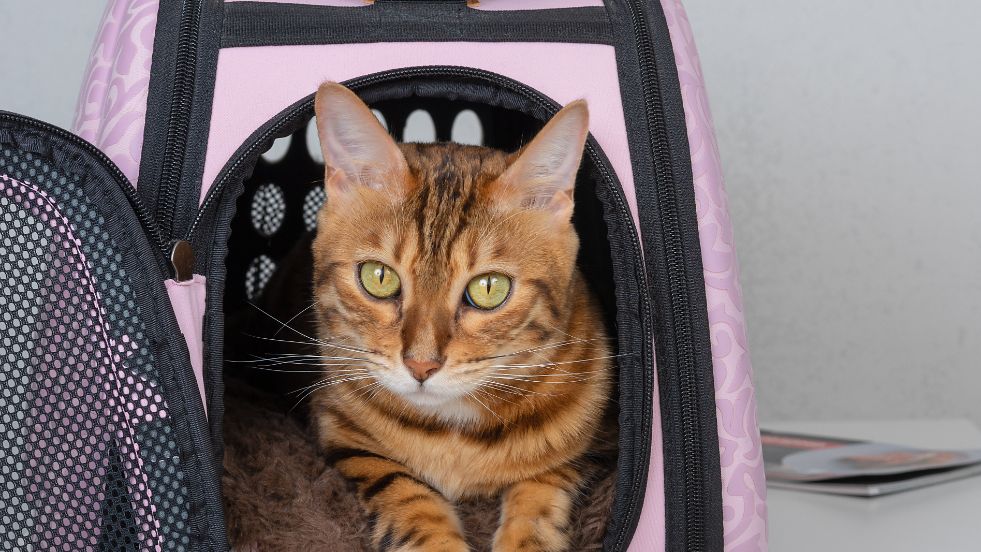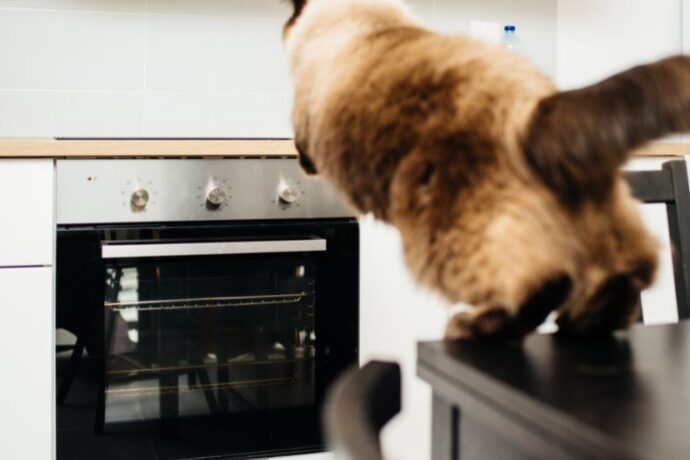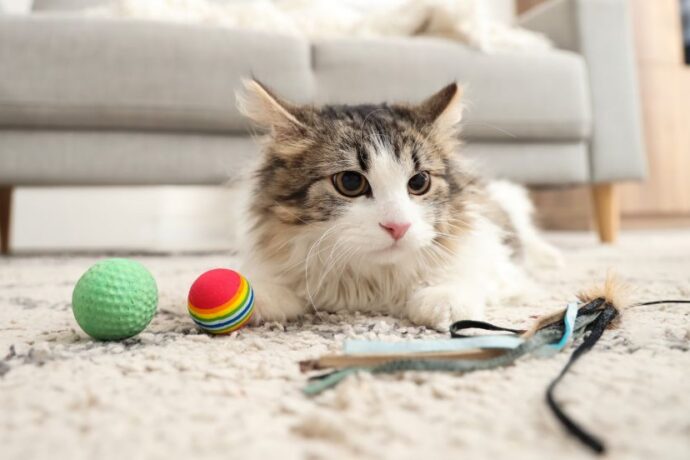Traveling with your cat doesn’t have to be a stressful experience—for you or for your feline companion! Whether you’re heading out on a short road trip, flying across the country, or moving to a new home, taking your cat along for the ride can be a smooth, enjoyable experience with the right preparation. Cats are creatures of habit and can be sensitive to changes in their environment, but with a little planning, patience, and a few essential tips, you can ensure that your cat travels in comfort and peace.
According to research published in the Journal of Veterinary Behavior, cats exhibit stress behaviors such as excessive grooming, meowing, and hiding when faced with unfamiliar situations like travel (1)(2)
8 Essential Tips for a Calm and Comfortable Trip with Your Cat

1. Start with a Familiar Carrier
Begin by choosing a comfortable, well-ventilated carrier for your cat that’s familiar to them. Place it in an area of your home where they like to spend time, and leave their favorite blanket or toys inside. This will help your cat associate the carrier with positive experiences and reduce anxiety during the trip.
2. Practice Short Trips First
Before embarking on a long journey, take your cat on short car rides to get them accustomed to the motion. Gradually increase the duration of the trips. This will help your cat feel more at ease when the travel time extends.
3. Avoid Feeding Before the Trip
Cats can get motion sickness, so avoid feeding your cat right before travel. Ideally, feed them about 3-4 hours before the trip to prevent nausea and to give them time to digest their food.
4. Keep Your Cat Secure During the Journey
Safety is a top priority. Keep your cat secure in their carrier during the entire trip, whether you’re traveling by car, plane, or train. This helps prevent them from getting stressed out by moving around too much, and it also ensures their safety.
5. Create a Calming Environment
For car trips, play soothing music or keep the environment calm with minimal distractions. Some cats respond well to natural calming pheromones (like Feliway) sprayed in their carrier, which can help reduce anxiety during the journey.
6. Provide Plenty of Water and Bathroom Breaks
Traveling can be exhausting for your cat, so keep them hydrated by offering water during rest stops. For long journeys, make sure there’s a place for your cat to use the litter box, especially if you’re traveling by car. In-flight travel requires a bit more preparation—ensure your cat is comfortable and can relieve themselves in the airport lounge if necessary.
7. Choose Cat-Friendly Accommodations
If you’re staying overnight, check that your accommodation is cat-friendly. Hotels or Airbnbs that allow pets often have specific areas where cats are welcome, so research ahead and ensure your cat will have a safe, stress-free space to settle in.
8. Stay Calm and Reassuring
Cats can pick up on their owners’ emotions. If you’re calm and confident, your cat will feel more secure. Talk to them gently, offer them familiar items, and try to maintain a steady routine even while on the move. A soothing voice can work wonders for calming a nervous cat.
FAQs: Answering Your Most Common Questions About Traveling with Cats
1. How do I prepare my cat for a long flight?
A. Long flights can be particularly stressful for cats. Make sure to choose a cat carrier that fits the airline’s guidelines, and check with your vet for any tips or medications to keep your cat calm during the flight. Avoid feeding them right before the flight to prevent nausea, and bring a familiar blanket or toy for comfort.
2. Can I use tranquilizers to sedate my cat during travel?
A. It’s not recommended to sedate your cat for travel unless advised by your vet. Sedatives can affect your cat’s ability to regulate their body temperature, which can be dangerous, especially in flight. Always consult with your vet for alternatives if you feel your cat is too stressed.
3. What if my cat gets car sick during travel?
A. If your cat is prone to motion sickness, consult with your vet about options to help them feel more comfortable. For short trips, you can try placing your cat in the back seat where there’s less motion. Additionally, try herbal remedies or calming treats to help ease their discomfort.
Conclusion:
Traveling with your cat can be a rewarding experience if you prepare in advance and take the right steps to reduce stress. By starting with familiarization, maintaining a calm environment, and following these expert tips, you and your cat can enjoy every adventure together. Whether it’s a road trip to a new destination or an international journey, your feline friend will love exploring new places with you—stress-free!
References:











